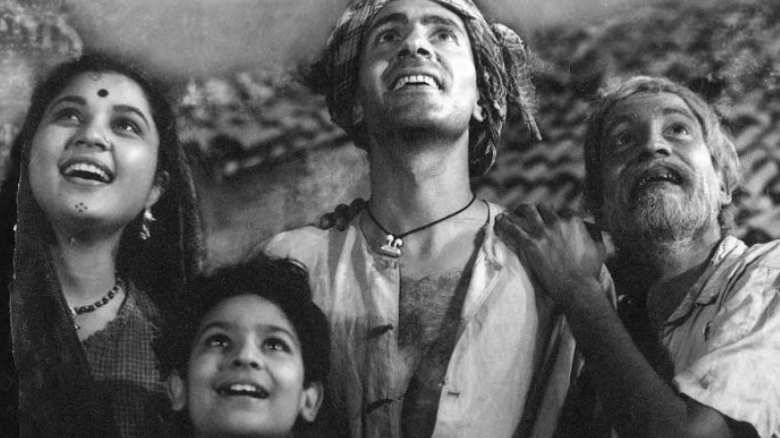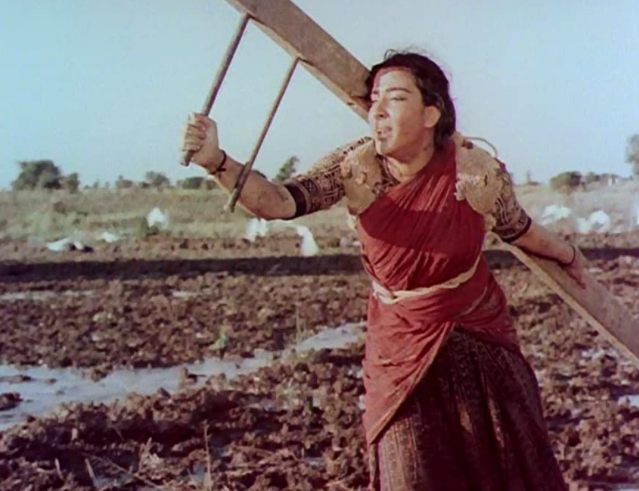
About 60 per cent of India’s population works in the agricultural sector. There used to be a times when farmers were the protagonists of numerous Indian movies. Nowadays, when the gloss-blinded Indian cinema has mostly forgotten farmers, these five iconic movies are still relevant and important:
Do Bigha Zameen (1953)
The first movie in this list is, undoubtedly, Bimal Roy’s Do Bigha Zameen. Known for its socialist themes, the film did not make a huge success commercially but was acclaimed internationally and was even released in China and the USSR.
Do Bigha Zameen tells the story of a poor farmer, Shambu, who lives with his family in a drought-ridden village and owns just two bighas of land. The problem begins when the rich landlord from his village decides to build a mill on his land and tries to acquire Shambu’s land because it lies in the middle of a vast expanse of land owned by him. Shambu is asked by the landlord to give up his land to him as he has an unpaid debt to the landlord. Shambu tries hard to pay it off. The movie chiefly portrays his struggle in a heartless city to earn money and take care of his family.
Mother India (1957)
Mother India is an epic drama film directed by Mehboob Khan. It tells the story of a farmer, Radha (Nargis), who is brought to ruin by a rich moneylender. Radha’s husband loses his arms while working in order to pay the debt and eventually walks away to his own probable death.

Radha is still oppressed by the landlord. A flood destroys the village and Radha urges the villagers to stay put. They rebuild the village and the movie fast-forwards to the future where Radha’s two surviving sons are now adults. One of her sons, Birju, has a very angry temperament and he is bitter about the hardships his family was made to bear during his childhood. He goes on to on to become bandit and attempts kidnapping the money-lender’s daughter on her wedding day. He is stopped by his mother, Radha, who shoots him and he dies in her arms.
Upkar (1967)
Upkar is a 1967 film directed by Manoj Kumar. The film turned out to be an instant box office hit. An interesting fact about this film is that it was made by Kumar after he was praised for his previous film, Shaheed, by Prime Minister Lal Bahadur Shastri and was asked to make another based on the slogan “Jai Jawan Jai Kisan.”
The movie tells the story of a rural farmer who sacrifices everything to get his brother educated and faces many hardships in his life. He also goes to fight in a war and returns back victorious. His brother also vows to become like him in the end.
Kisan Kanya (1947)
Kisan Kanya is a 1947 film directed by Moti Gidwani. It is mostly remembered as India’s first indigenously made color film. It is based on a novel written by Saadat Hasan Manto and portrays the struggles of poor farmers in India.
The film has music by Ram Gopal Pandey and includes ten songs. It casts Padma Devi and Jiloo.
Dharti Ke Lal (1946)
Dharti Ke Lal is the debut film of acclaimed director K.A. Abbas. It is one of the first films in Indian cinema’s social-realist movement. Notably, it became the first Indian film to receive a widespread distribution in the USSR.
The movie portrays the Bengal famine of 1943, and tells the story of a family devastated by this great humanitarian crisis. New York Times called it a “...gritty realistic drama.”
Do let us know if you liked this article or want to add something to it through the comment box given below.
















